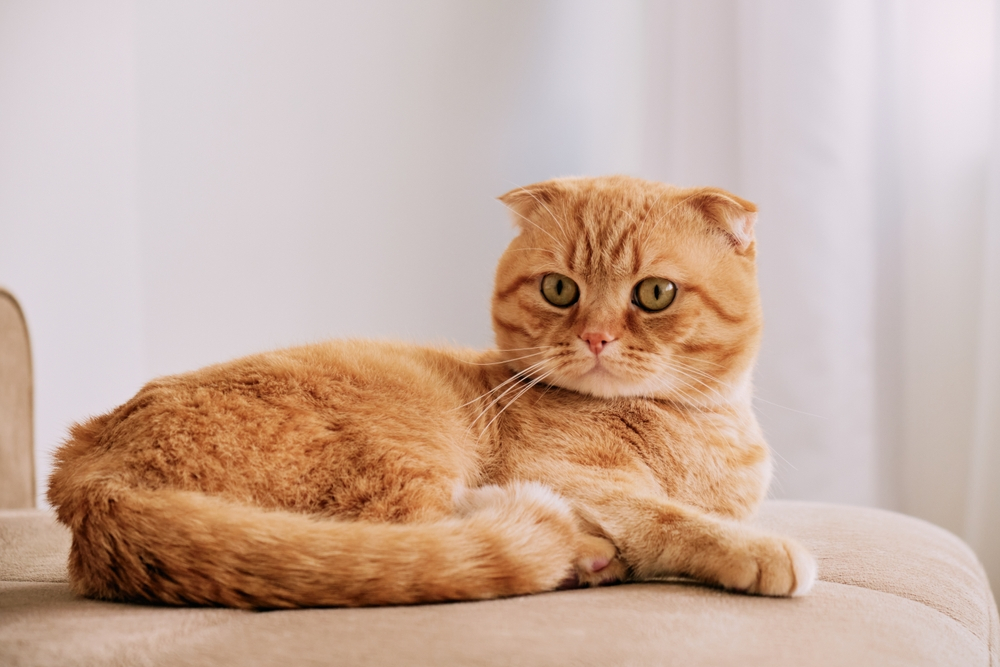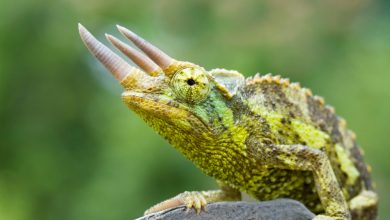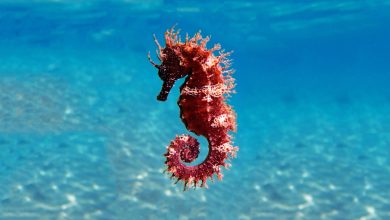
Orange cats, with their vibrant fur and endearing personalities, have captured the hearts of many cat enthusiasts around the world. Their striking appearance and charming charisma make them a popular choice among pet owners. Whether you’ve seen them in movies, books, or your neighbor’s window, orange cats have a way of standing out and making a lasting impression.
This blog post aims to delve deeper into the world of orange cats by revealing ten fascinating facts that you might not know. From their unique genetic makeup to their historical significance and distinct personalities, we’ll uncover the secrets that make these felines truly special. So, whether you’re an orange cat owner, considering adopting one, or simply intrigued by these beautiful creatures, join us as we explore the lesser-known aspects of orange cats.
1. The Genetics Behind Their Color
The distinctive orange hue of these cats can be attributed to a particular gene known as the Orange or O gene. This gene produces a pigment called pheomelanin, which is the same pigment responsible for red hair in humans.
The Orange gene is located on the X chromosome, which means its inheritance is closely linked to the cat’s sex. Since males have only one X chromosome (XY), they need just one copy of the Orange gene to display the orange coat.
In contrast, females have two X chromosomes (XX), so they require two copies of the gene to be orange. This genetic difference explains why a higher percentage of orange cats are male. Fascinatingly, the patterns of their fur, ranging from solid to striped or spotted, are also determined by the interplay between this gene and other genetic factors, making each orange cat uniquely captivating.
2. Orange Cats Have Unique Personalities
Orange cats are often celebrated for their outgoing and friendly natures, captivating anyone who crosses their path. Commonly associated traits include being affectionate, social, and playful. Many owners report that their orange cats enjoy interacting with people, often following them around the house and seeking constant companionship. This observation is not merely anecdotal; various studies have suggested that orange cats tend to exhibit more sociable and bold behaviors compared to other felines.
For example, a comprehensive survey conducted by the University of California, Berkeley, revealed that cat owners frequently describe their orange cats as warm, people-oriented, and more prone to engage in human contact. These unique personality traits make orange cats not only distinctive in appearance but also in their ability to form strong, loving bonds with their human families.
3. More Likely to Be Male
Interestingly, about 80% of orange cats are male, a statistic that can be traced back to their unique genetic makeup. The reason for this skewed gender distribution lies in the Orange gene’s location on the X chromosome. Male cats have just one X chromosome paired with one Y chromosome (XY), so a single copy of the Orange gene will result in an orange coat.
On the other hand, female cats have two X chromosomes (XX) and need two copies of the Orange gene to be orange. Therefore, it is statistically more likely for males, who need just one copy, to have the orange coat compared to females, who require two copies. This genetic mechanism leads to a higher proportion of male orange cats, contributing to the fascinating diversity within the feline population.
4. Famous Orange Cats in Pop Culture
Orange cats have left a significant mark on pop culture, becoming beloved icons in movies, TV shows, and literature. One of the most famous orange cats is Garfield, the lasagna-loving, Monday-hating feline from the comic strip created by Jim Davis.
Garfield’s sarcastic humor and relatable laziness have made him a household name since his debut in 1978. Another iconic orange cat is Morris, the finicky 9Lives cat food mascot, known for his picky eating habits and witty personality that have charmed audiences since the 1970s. In the realm of animated films, Puss in Boots from the “Shrek” series stands out as a swashbuckling, yet charmingly adorable character, earning his own spin-off movie.
Additionally, Crookshanks, Hermione Granger’s intelligent and loyal pet in the “Harry Potter” series, showcases the astuteness and endearing nature of orange cats. These characters, each with their unique traits, have cemented the orange cat’s place as a significant and cherished part of pop culture.
5. Social and Affectionate Nature
The social and affectionate nature of orange cats is one of their most endearing qualities, making them beloved companions in many households. These felines are known for their engaging behavior, often seeking out interaction and affection from their human families.
They tend to follow their owners from room to room, always wanting to be part of the action. Whether curling up on a lap, purring contentedly during petting sessions, or playfully swatting at a favorite toy, orange cats thrive on human companionship. They also display a remarkable ability to get along well with other animals, often forming close bonds with other cats, dogs, and even smaller pets.
Owners frequently share heartwarming stories of their orange cats cuddling with other pets, grooming them, and engaging in gentle play. This social inclination, combined with their friendly and affectionate demeanor, makes orange cats wonderful additions to multi-pet households and valued members of the family.
6. Variations in Coat Patterns
Orange cats boast a stunning variety of coat patterns, each adding to their unique charm and individuality. Among the most common coat patterns found in these felines are tabby, striped, and spotted. The tabby pattern, often characterized by distinctive “M” shaped markings on the forehead, can further be divided into sub-patterns such as classic, mackerel, and ticked.
The classic tabby showcases bold, swirling patterns resembling marble, while the mackerel tabby features narrow, parallel stripes running down the sides of the body, akin to a fish skeleton. The ticked tabby, on the other hand, exhibits an almost speckled appearance with each hair shaft banded in multiple colors.
Striped patterns are typically seen in conjunction with the mackerel tabby, where the stripes are more pronounced and aligned. Spotted patterns, though less common, display unique spots or rosettes akin to those of wild cats like leopards. These variations in coat patterns, each influenced by specific genetic factors, ensure that no two orange cats are ever exactly alike, making their appearance as captivating as their personalities.
7. Historical Significance
Orange cats have enjoyed a long and storied history, intertwining with various cultures and their mythologies. Dating back to ancient civilizations, these felines have often been revered and respected.
In Ancient Egypt, cats, in general, were held in high esteem, believed to bring good fortune and were often associated with the goddess Bastet, who symbolized home, fertility, and domesticity. As domesticated pets, cats were cherished companions, and their orange counterparts were no exception.
In more recent history, orange cats have been depicted in European folklore and superstitions, often symbolizing good luck and prosperity. Their striking appearance and vibrant coat have made them subjects of poetry and art, where they were often portrayed as symbols of warmth and comfort.
In modern times, through their presence in media and popular culture, orange cats continue to be iconic, representing traits such as bravery, warmth, and amiability across many narratives and cultural references.
8. Health Considerations
Orange cats, like all felines, can experience specific health issues and may have some genetic predispositions. Common health problems for orange cats include obesity, dental issues, and diabetes, which are often the result of dietary habits and lack of exercise. Additionally, due to their genetic makeup, they may be more prone to developing certain skin conditions. To keep your orange cat healthy, regular veterinary check-ups are essential.
Ensuring they receive a balanced diet that meets their nutritional needs is crucial in preventing obesity and related health issues. Dental health should not be overlooked; providing dental treats and routine teeth cleanings can help prevent periodontal disease.
Regular exercise and mental stimulation through play and interactive toys can also contribute to maintaining an orange cat’s overall well-being. By being proactive and attentive to their health needs, you can help ensure a long, healthy, and happy life for your orange feline companion.
9. Their Love for Food
Orange cats are renowned for their love of food, and their eating habits can be both amusing and telling of their overall health. Observations indicate that these felines often exhibit a strong enthusiasm during mealtime, eagerly awaiting their favorite dishes with a level of excitement that is hard to miss. This robust appetite, however, needs to be managed carefully to avoid obesity.
A balanced diet is crucial not only for weight management but also for maintaining their striking coat. Essential nutrients such as omega-3 and omega-6 fatty acids found in high-quality cat food can significantly enhance the sheen and vibrancy of their orange fur.
Additionally, adequate hydration and proper portion control play pivotal roles in sustaining their overall health and preventing common dietary-related issues. Owners should be mindful of the connection between diet and coat health, choosing nutritionally rich food that supports a healthy, glossy coat while keeping their orange feline companion’s love for food in check.
10. They Tend to Stand Out
Orange cats, with their vivid and striking coats, are undeniably eye-catching and easily noticeable. Their bright and warm hues make them stand out in any environment, whether it’s amidst greenery in a garden or curled up on a couch. This distinctive look not only catches the attention of onlookers but also endears them to cat lovers.
Anecdotes from cat owners frequently highlight how their orange cats’ dynamic presence and unique personalities shine through. Many recount funny stories of their orange cats demanding attention by physically placing themselves in the center of any gathering or playfully darting around, showcasing their bold and adventurous nature.
Additionally, their charming ‘M’ shaped markings on the forehead and other distinct coat patterns contribute to their memorability. These standout characteristics ensure that orange cats not only become unforgettable members of any household but also leave a lasting impression on everyone they meet.
Conclusion
In summary, orange cats are truly captivating creatures with their distinctive looks and engaging personalities. We’ve explored a wealth of fascinating facts about these felines, from their diverse coat patterns and historical significance to their health considerations and undeniable love for food. Whether it’s the classic, mackerel, or ticked tabby, each pattern adds to their charm.
Historically, they’ve been cherished and revered across various cultures, and they’ve continued to capture our hearts in modern times as beloved pets and cultural icons. However, it’s essential to pay attention to their health needs, ensuring a balanced diet, regular exercise, and routine vet check-ups to keep them in top form. Finally, their striking appearance and vibrant dispositions make them standout members of any household, leaving lasting impressions on everyone they encounter.
We hope you found these insights into orange cats both informative and enjoyable. If you have an orange cat or stories about one, we encourage you to share your experiences with us. Whether it’s a funny anecdote or a heartwarming tale, we would love to hear about how your orange feline companion has brought joy into your life. Feel free to leave a comment below and join the community of orange cat admirers who celebrate the unique beauty and charm of these delightful creatures.
Thank you for joining us on this journey through the captivating world of orange cats. We hope “10 Fascinating Facts About Orange Cats You Didn’t Know” has deepened your appreciation for these magnificent felines. If you found this blog post informative and enjoyable, don’t forget to follow us on social media for more updates, tips, and fun facts about cats and other pets. Stay connected with our vibrant community of pet lovers and never miss out on the latest content!




